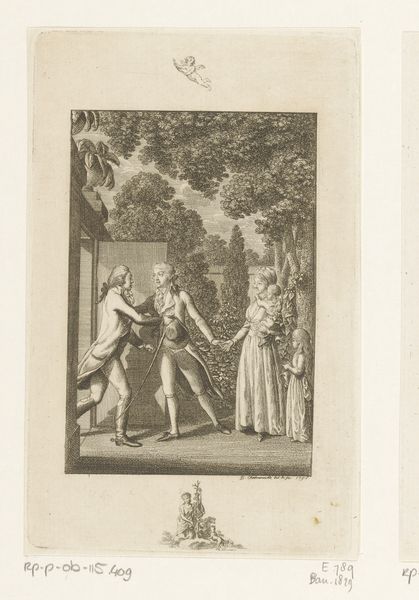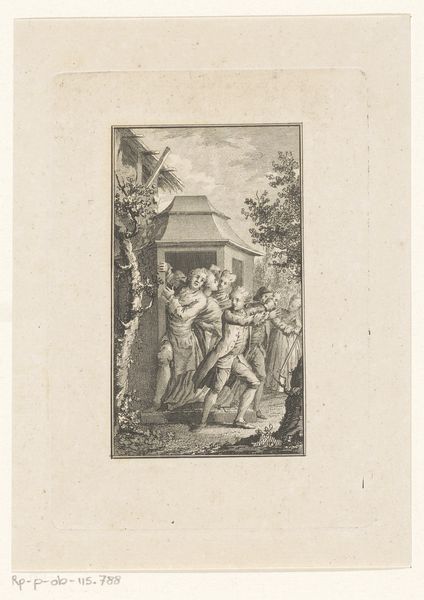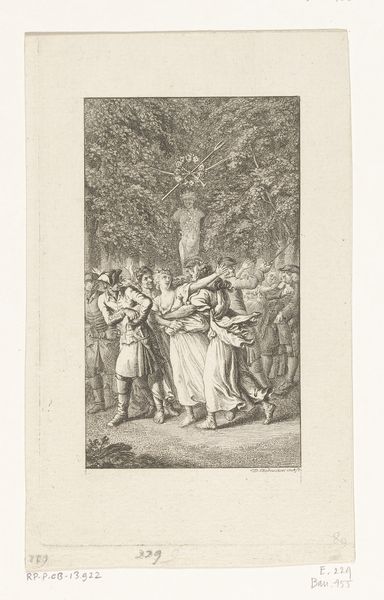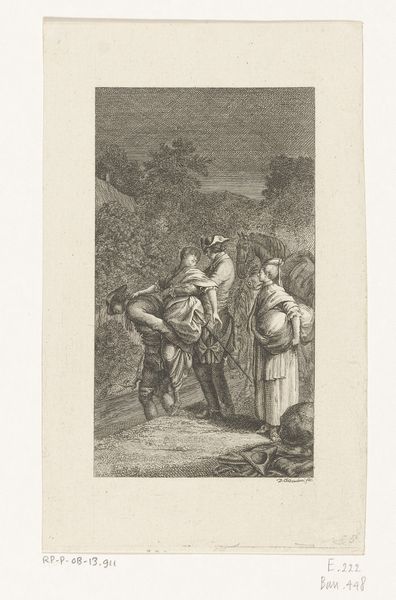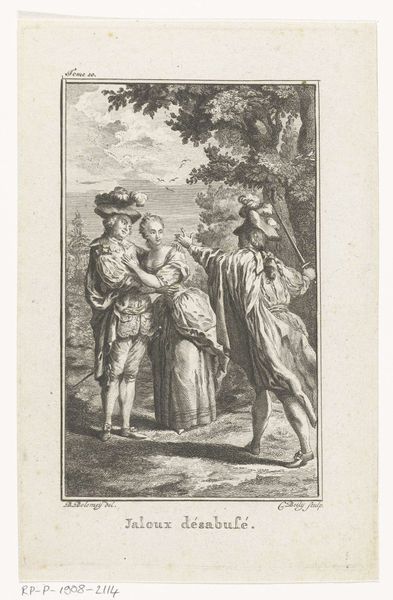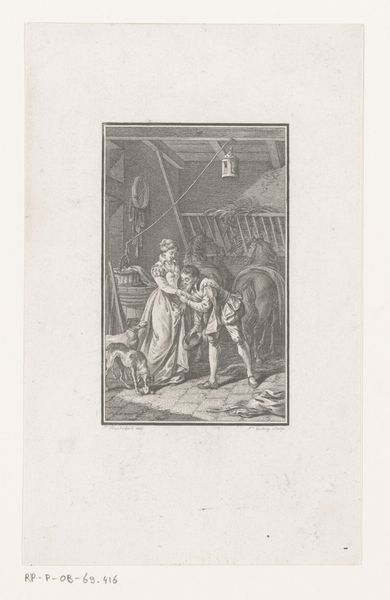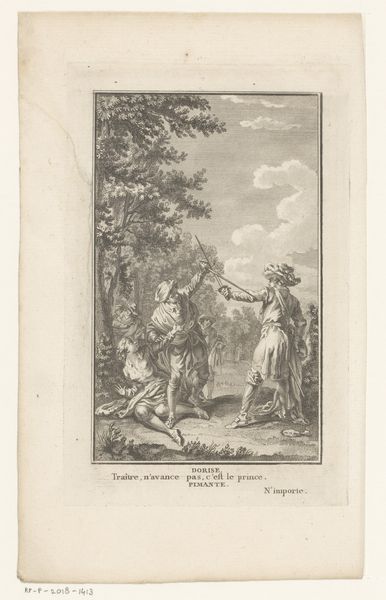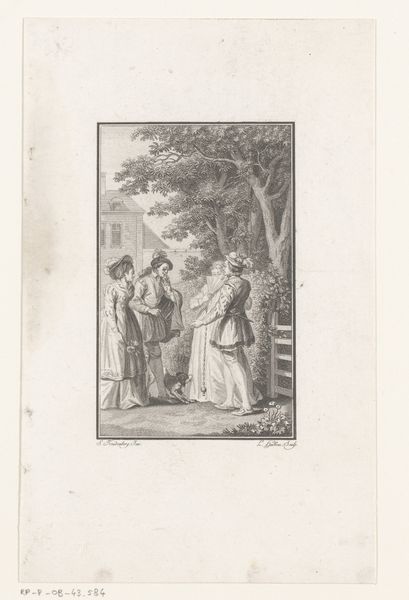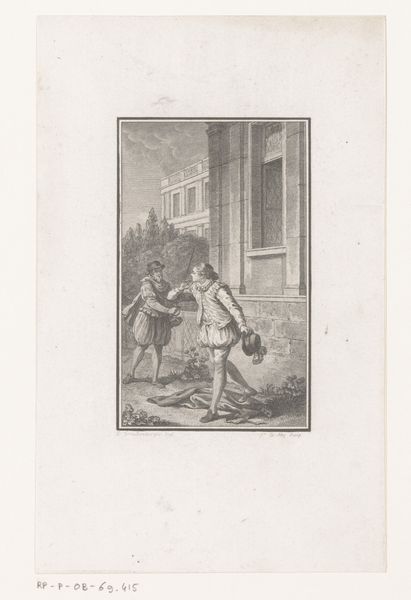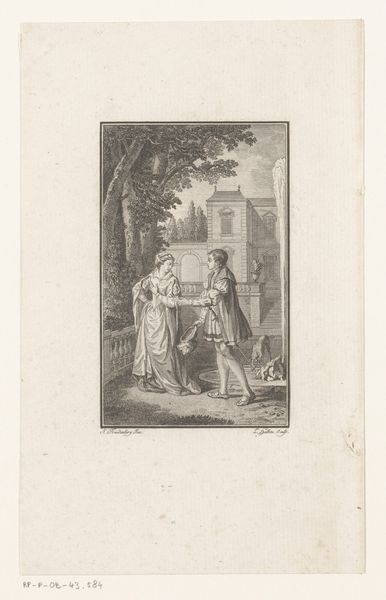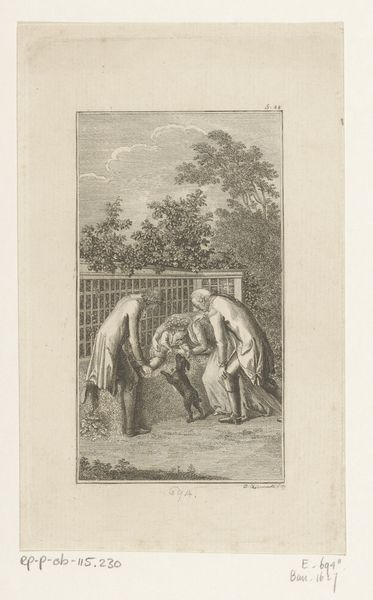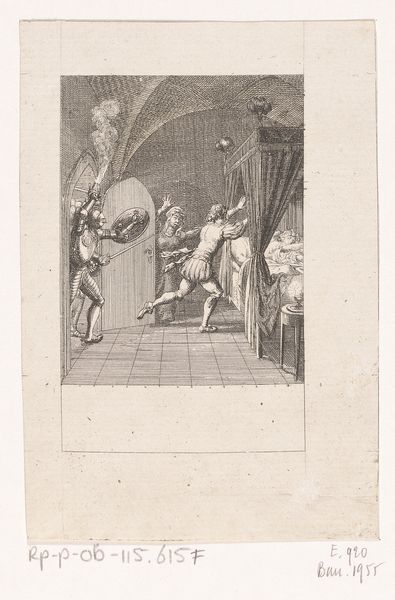
Dimensions: height 162 mm, width 103 mm
Copyright: Rijks Museum: Open Domain
This print, "Clarissa door Lovelace ontvoerd," was created by Daniel Nikolaus Chodowiecki, using a technique called etching. This painstaking process involves covering a metal plate with a waxy, acid-resistant layer, then drawing through it with a sharp needle to expose the metal. The plate is then submerged in acid, which bites into the exposed lines, creating an image that can be inked and printed. The fineness of the etched lines allows for incredible detail, evident in the characters' expressions and the textures of their clothing. But it's the very nature of etching – a process of controlled corrosion, a slow and deliberate act of mark-making – that infuses the image with social significance. Consider the labor involved in this kind of image-making, which makes the artwork so interesting. Chodowiecki's print wasn't just an aesthetic statement; it was a product of specific skills and labor, reflecting broader issues of class, production, and the artist's role in society. By understanding the material and process behind this image, we gain a deeper appreciation for its cultural value.
Comments
No comments
Be the first to comment and join the conversation on the ultimate creative platform.
